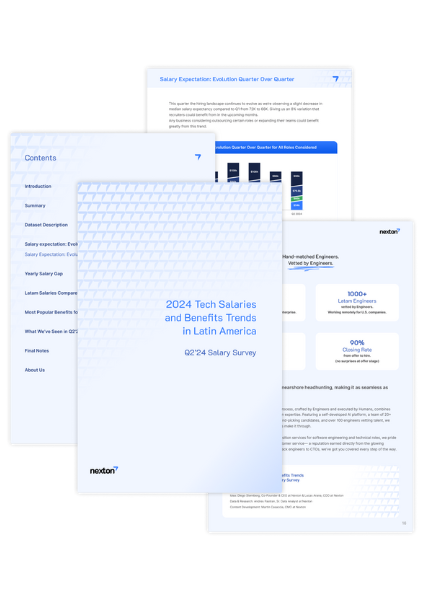Making an analysis of your competition is one of the most common tools in the UX practice. It’s generally made during the discovery phase of the project and will help you gather useful insights about your clients’ business, the market and the problem you are aiming to solve. This practice, when it’s properly done, becomes a great training for the critical and comparative mindset that is vital for the team working on creating innovation for its clients.
What Is a Competitive Analysis?
This kind of analysis will allow you to gather a lot of important information for your project that will become powerful insights. Learning about who your client’s competition is, how they present themselves, how is their relationship with the users, through which channels does it happen, and what their strengths and weaknesses (compared to your client and to other competitors) will help you to design better solutions.
Of course, it can be developed in many different ways according to its objective. You can focus on more specific objectives, such as relieving certain specific aspects of your competitors (E.g. their mobile app) or how they perform a specific task (e.g. product customization flow, checkout, etc.) or you can also use it for a more general analysis (such as your marketing strategy).
Before you start is crucial that you have to be very clear about what you expect to learn through this process. The competitor analysis should only come after you’ve understood the problem areas of the project you’re working on, so you know the questions you want to answer through this exercise. This will give you a clear objective for performing a focused analysis.
Why is it a good idea to do it?
Along with other sources of quantitative and qualitative data, this kind of analysis has the potential to be a fast, cheap and valuable source of useful information. When is done the proper way and with a clear objective, it will allow you to make findings that will help you build your strategy and with your designs:
Be familiar with the context. Knowing the companies, brands, products you are competing with will give you knowledge about the field where your team is playing.
You will be able to identify which are the standard practices for a certain market. How do an app, a website, an online customer service tool, etc. are expected to work and look there. For being able to recognize this, you won’t have to look for all your competitors, you will need to select your top competitors, the ones you identify as most important and interesting. You will have to work on understanding what is “the usual” for these top players and how are their users or customers used to interact with them and most importantly, why do they love them.
If you dive deep in your analysis you will be able to detect that maybe one or two of your competitors do something differently that generates an exceptional user experience. This subtle difference can be based on several factors, from the efficient use of new technology to a highly polished look & feel. Or it can be just simple tweaks here and there that gives a boost to the general experience. These are not simple to identify from a user perspective, but when you do this kind of analysis with the right mindset and focused on the strategy that you set in first place, you will be able to detect them and understand how they create their magic.
Of course, while you analyze your competitors, you will have the chance to find the opposite. Which are the decisions that lead to a poor experience and how would you improve those situations? This is a great chance to learn from the mistakes of others. Select the cases that you think are the more relatable with the problems that you are trying to solve regarding your product and don’t lose them from your sight while creating new designs.
When you are conducting a competitive analysis it is very important that you avoid doing so superficially and always use your critical gaze. This tool gives you the chance to learn from someone else’s experience and be able to generate new ideas on how to best solve the (UX, UI, Technical) problems you are working on.
What should I look at when doing a competitive analysis from a UX perspective?
As we said, an analysis will vary greatly according to what you want to learn from the experience of the competition. If we focus on study certain specific elements of your competitor relation with their users or customers, this list may be useful for you to consider in your analysis:
- Certain characteristics of the website or app of your competition (search tools, filters, content creation, personalization, etc.)
- Elements related to the customer experience (abandoned cart approach, customer support, cross-platform experience, etc.)
- How they manage their social media strategy (through which channels, how often they make a post, what reactions they have from their audience)
- Content Marketing Strategy (what content they generate, in which channels, to which audience it is aimed)
- Other marketing strategies (promotions, discount coupons, etc.)
- Email marketing strategies
- Customer reviews (specific language used on products, recurring complaints, improvements or major changes that well received by users, etc.)
Let’s do it.
This is how we carry out a competitive analysis when we need information on how to solve a problem for our clients:
- Focus on the problem you are trying to solve within the project, do not lose sight of it.
- Define what you want to find out from your competitors. This should be related to the problems you are aiming to solve in your project. If -for example- you have to work on how a user can publish a product for sale in a marketplace, surely you should review what other similar platforms do that job, which are the steps to follow, what information is mandatory, if there are any findings about how to make this process easier, generate better content, etc.
- Now you can define a list of competitors to work on. Your client will surely be very clear about who they are and will give you a list, but you should do your own research for others that operate in a similar space but the relationship is not so direct. Taking the previous example, if you are working on a marketplace of used goods, it may be worth looking at what are the similarities with other platforms where users can publish a product, a place, a service, something to be sold or rented.
- Once you checked your competitors’ sites, social media, apps, whatever you defined as needed, organize that information in a way that helps you generate a clear report and present your findings to the client. Some use a comparison matrix, others make notes on screenshots, find which way is the best for you. It is important that you can focus on your findings of what are the standard practices, what exceptional findings you’ve detected that can lead you to new ideas for the project and of course, do not forget to mention the errors detected that should be avoided in the development.
We hope this article gave you a clear intro about the use of this tool and its advantages, and remember: the idea behind it is not to replicate whatever the competitors are doing since blind imitation is a direct path to failure. Also, have in mind that Competitive Analysis will provide you valuable information to understand your client’s business, the market standards, learn from what already exists -the good and the bad- and detect the new opportunities for your project to excel, but is not enough by itself. You also need to make primary research, since it will provide information about what your users needs.
Did you use the competitive analysis before start developing new product solutions? Love to hear from your experience in the comments.


